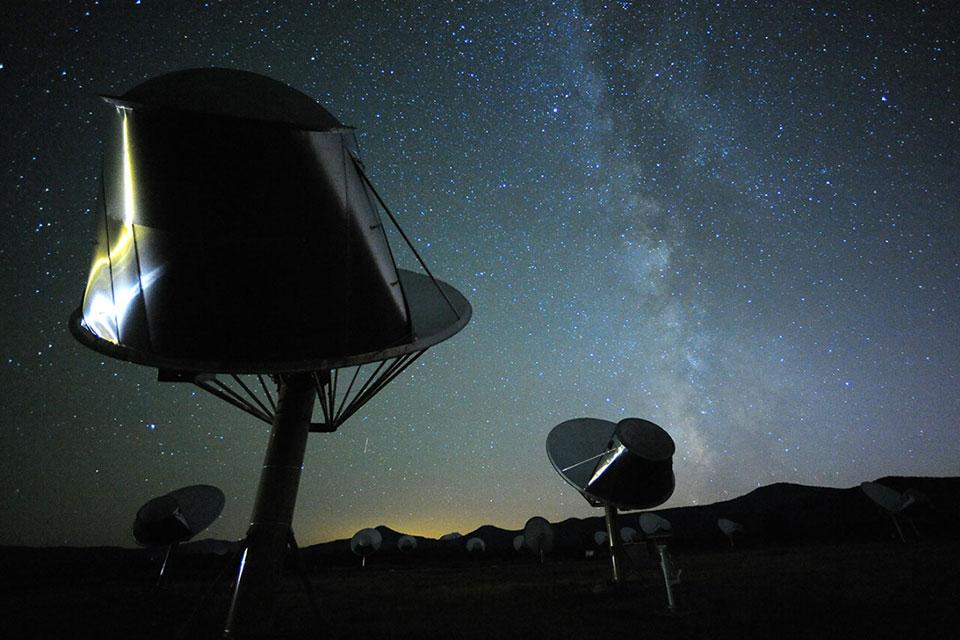Oxford astronomers have led a project in which the earliest stages of the Universe’s most powerful explosions are captured in detail for the first time. This astrophysics first was made possible thanks to the flexibility and power of today’s telescopes and has enabled an understanding of gamma-ray burst physics not previously possible.
Brightest of All Time
On Sunday 9 October 2022, a pulse of intense radiation swept through the solar system, triggering detectors on numerous spacecraft and follow-up studies by observatories around the globe. The source was a gamma-ray burst (GRB), the most powerful class of explosions in the universe. The blast, called GRB 221009A, was over 100 billion times brighter than the sun, and so exceptional that astronomers quickly dubbed it the BOAT – the Brightest Of All Time.
The GRB community have been studying the BOAT for the past six months across the entire electromagnetic spectrum, from very low radio frequencies where disturbances were measured in the upper atmosphere, up to teraelectronvolt energies where light which is about one trillion times more energetic than optical light was detected – the highest energy photons ever detected from a GRB.
Unprecedented detail
As part of an international collaboration, Oxford-based astrophysicists used radio telescopes around the world to observe GRB 221009A starting just three hours after the explosion. Lead authors of a new paper, Precise measurements of self-absorbed rising reverse shock emission from gamma-ray burst 221009A, Dr Joe Bright and Dr Lauren Rhodes, both from the University of Oxford, were awarded and collected over 100 hours of observing time across five different telescopes worldwide. In their paper, they focus on this very early radio emission in unprecedented detail revealing properties of the jet while it is still rapidly evolving.
The data allowed for a detailed study of the reverse shock which travels back into the explosion – hitherto hampered by a lack of early-time observations, particularly in the radio band. From this, the group were able to constrain the size, Lorentz factor (the factor by which time, length and relativistic mass change for an object while it is moving), and internal energy of the outflow while providing accurate predictions for the location of the peak frequency of the reverse shock in the first few hours after the burst.
Ideal event to study
‘GRB 221009A is a once in 10,000 years event,’ comments Dr Rhodes. ‘Because the jet is the perfect combination of being both incredibly energetic and nearby, this makes it the ideal event for astronomers to study. It is allowing us to understand GRB physics in a way not previously possible – for the first time, our observations are better than our theories and it has generated huge strides in our understanding.’
Dr Bright continues: ‘Our ability to rapidly respond to this event with a range of radio telescopes has been instrumental in understanding the early-time behaviour of relativistic jets. It demonstrates the importance of such observing flexibility when developing new facilities.’
Informing future rapid response instruments
This work has involved astronomers from the UK, USA, Australia, The Netherlands, Italy, and South Africa. Together, they have collected data from radio telescopes worldwide, allowing them to study the violent interaction between the jet and circumstellar medium. These observations allow for detailed tests of theoretical predictions of how this interaction should behave, as well as being highly informative for future rapid response instruments such as the planned African Millimetre Telescope of which Oxford Astrophysics has key involvement.
Precise measurements of self-absorbed rising reverse shock emission from gamma-ray burst 221009A, J S Bright, L Rhodes et al, arxiv

